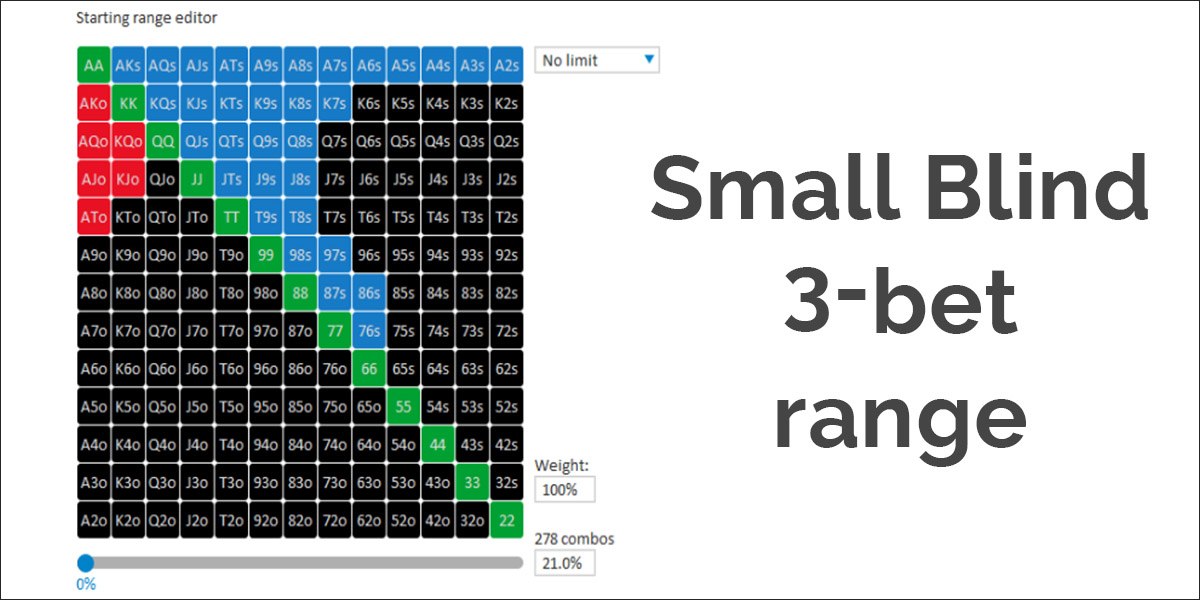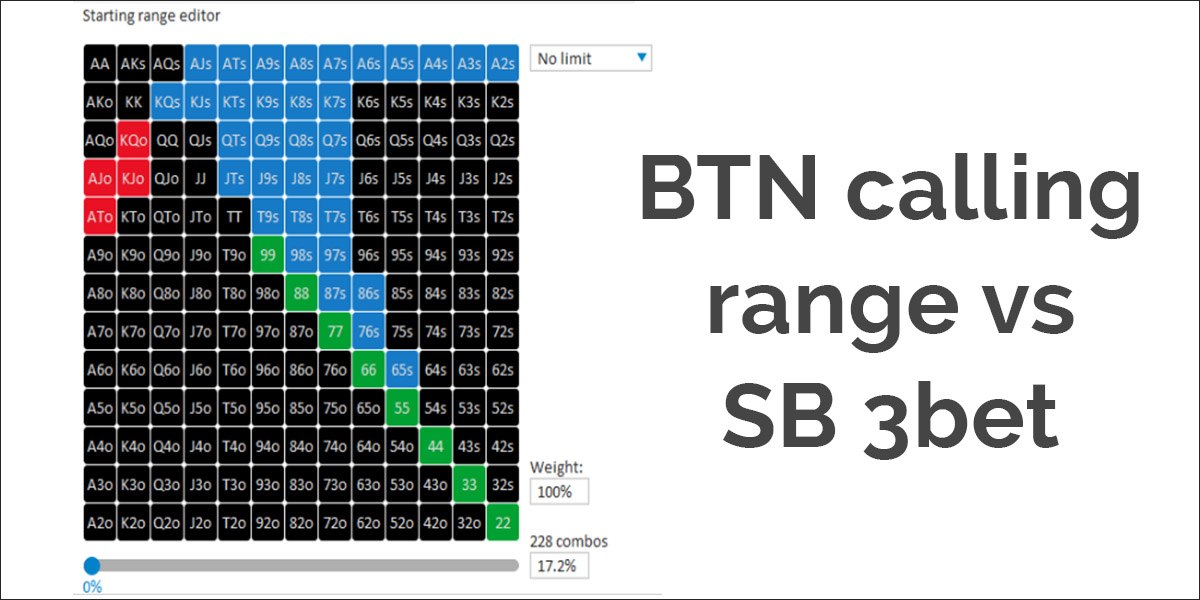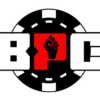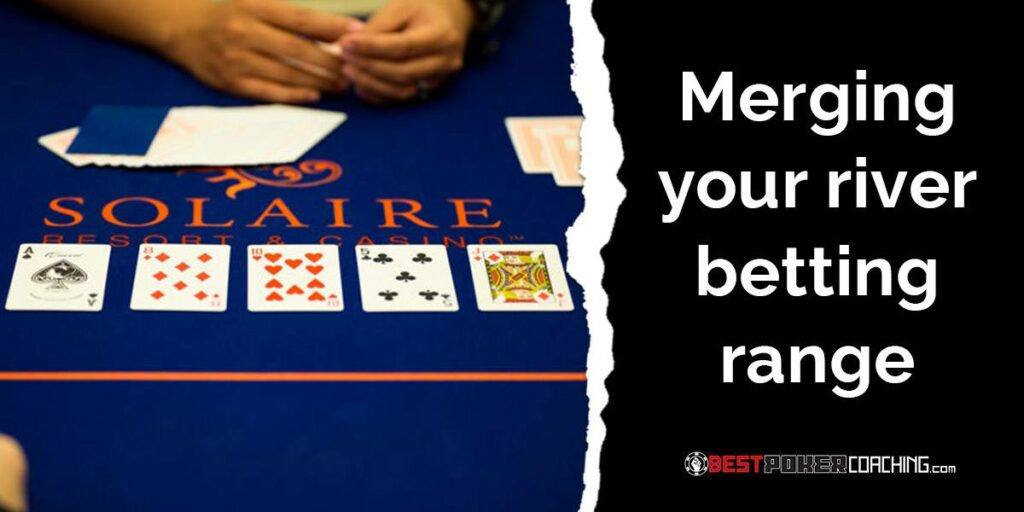This article is a little advanced, and I will dive deep without defining basic poker terminology first. One can learn swimming by falling into the sea (the brutal way). It applies to everything in life to some extent. If you feel, however, that this does not match your current needs, after having read the first two-three paragraphs, feel free to skip the analysis and jump to the conclusions. As you grow as a player you can always revisit this text in the future.
Merging your range is an art which can optimize your game and give you an edge in specific spots. It can help you create the image at the table of a bad ass, same time making the correct play (non-obvious for many of your opponents).
On the other hand, is not the most common way to construct your betting strategy. Therefore, I will start by describing a natural way of betting, the so-called polarized approach. I will use the river and 3 bet pots as an example, where the big money along with the big excitements and/or disappointments take place. After all, this is a game for big boys!!
Ok, let’s move to the presentation of this technique by examining a realistic and frequent scenario.
The hero is SB and 3bets vs a BTN open with a range of 21%, whilst BTN calls ip vs the 3bet with a range of 17%. Notice that the total defense range of BTN is a little smaller, simply because I assume that the BTN has also a 4bet range (both for value and as a bluff).


The flop comes JsTc6c.
The task is to create a polarized betting range.
I will start from the flop, without going in an excessively detailed analysis, to show the basic principles and thinking process.
- All the hands which have equity more than 70% vs Villain’s range can be considered value bets:
In this case, these include:
AJ(12 combos), KJ(12 combos) ,QQ-AA (18 combos), JJ (3 combos), TJs (4 combos), 66 (3 combos).
*Here, one can see that our value range is always a function of Villain’s calling range and the board.
I put this note here cause it is a very common leak people to claim that they bet for value when in reality they are bluffing, semi-bluffing… or even worse, value betting for Villain their selves!!
Of course one doesn’t want to be betting 100% with the above, simply because it is wise to keep some of the strongest in the flop checking range. Not only for keeping your range uncapped, but also for board covering reasons (i.e you want to be able to cover as many turn and river run outs as possible). This, however, will not be covered here in full detail, because it is out of the scope of this article.
- All the hands which are of medium strength (i.e. they don’t have potentially 3 streets of value, and they have equity in the range 55-65% vs Villain’s range) are going to be check-calls.
In this scenario mostly these include:
Tx combos: ATs, KTs, QTs, ATo etc.
And of course, you still should include in your check-calling (or check-raising range) some of the very strong as already discussed, along with some flush draws (for board covering reasons among others) gutshots etc. It should be noted here, however, that all the rest (the ones which are not 2nd pair type of hands) are not a big portion of your checking range.
- The hands that have vaguely less than 45% equity vs Villain’s range are going to check with a plan to check-fold vs a bet.
- And lastly, on the betting range one should include, shaping the polarized range, all the hands which have equity in the range 45-55% (or some with a little less but which can make the nuts by the river, i.e. their implied equity on some run outs is large).
Here, such hands include 78s, 98s, Q9s, K9s, KQ, AK etc.
To summarize, with a polarized betting strategy, one can say in an abstract manner that bets should be the strong hands and the weak hands (but the ones which can make the nuts by the river, and have enough equity to continue, i.e. not the hands that we are going to give up with). And checks with a plan to check-call should be the medium strength hands.
*The check-raising strategy will be covered in a future article.
Ok. I will not bother with the turn since the river is the main topic here. But the same principles apply there as well.
And now, let’s discuss the old and tricky to deal with river.
For the sake of simplicity and in order the concepts to be clearer, let’s assume that the turn is the 2h and the river is the 2s. Yes, we do have busted draws and we need to know what to do with them
So again, I will present the polarized approach, which is the correct way to play in this scenario.
Betting range: Should be the strong hands (the ones which had more than 70% equity on the flop and were clarified as value bets):
AJ, KJ, JJ etc.
Assuming again, that one should check sometimes with some of them, these, in this case, will be around 35-40 combos.
All the hands of medium strength are going to be a check (which now on the river makes a lot of sense, why one would bet with less equity than 50% vs Villain’s calling range?).
All the rest should be bluffs. Here one can put all the busted draws (KQ, 89s, 78s etc). However, how wide one can bluff depends on how wide can value bet. A rule of thumb says that the number of bluffs you can have are around half of the value bet combos. In this case, sth in the range of 15-20 combos.
Priority has hands which:
Have low showdown value, i.e. you don’t want to be bluffing the river with AK but 78s doesn’t worth almost nothing as a check.
Block Villain’s strong holdings, i.e. KQ blocks KJ, QJ but 78 doesn’t have good blockers.
Nice. Let’s now jump to the main course!!
Let’s assume, for the same preflop scenario, that the board comes: Qd9s9d 2h 2c.
Again, hero bets on the flop and on the turn (with a polarized range). What should hero do on the river?
Here the answer is not that simple.
To start with, in this example the value range includes KK-AA, T9s-A9s.
This is a very small range.
What about QJs and QTs?
Is Villain going to call with worse here vs a 3rd barrel? Is he going to call all his stack with a hand like Q8s?
In reality, if you play aggressively, he is forced to call not only with these but also with hands as weak as 55-JJ, at least with some frequency. This, simply because otherwise, he is going to be folding way too much, opening the opportunity for a good opponent to be bluffing him without mercy.
He doesn’t have many Qx and 9x in his preflop calling range to compensate aggression.
And here is when merging your betting range starts to play hard as a concept.
Now, you want to take some of the medium strength hands (at least in terms of human clarification and perception of strength) and put them in your betting range!!
You can even bet a hand like 88 here following the above analysis!!
Because, if Villain has to be calling with 55, is better for you to be betting with 88 first (betting is going to be higher EV than checking), and then with completely air!!
This doesn’t necessarily mean that you are not going to have your nice bluffs with blockers as well. In this example, you can bluff with hands like KTs, KJs etc. Hands which block the possible nuts/strong holdings of Villain’s range and don’t have so much showdown value.
Therefore, the polarized concept still applies with its merits.
*There are examples where you might need or is better to have a pure merged range or a pure polarized range, but also examples where a mix of the two is the most optimal strategy.
Conclusions:
Usually, a merged range makes sense when:
1) Your “normal” value range is narrow.
2) Villain’s “normal” calling range (in terms of the portion of the whole range) is narrow as well.
The most common way to construct your betting range is a polarized approach.
However, there are cases where the ranges get narrow, and because of the nature of pot odds (which determine, at least for more or less symmetrical ranges, the minimum defending frequencies), where a merged range and/or a combination or a merged and polarized range makes a better strategy.
Now, you have the weapons to make the calling happy regs afraid of you!! And trust me, they are going to tilt and this is going to be your price of having the skills of merging!!




